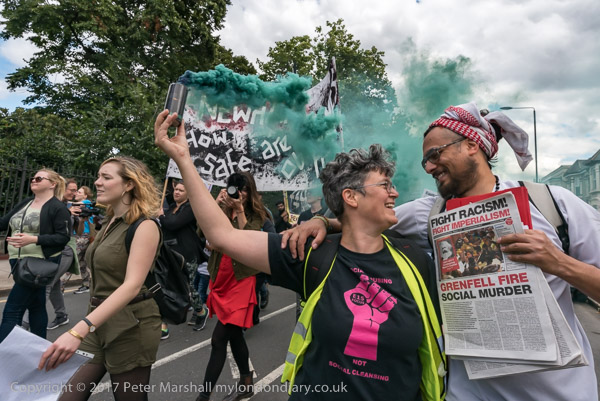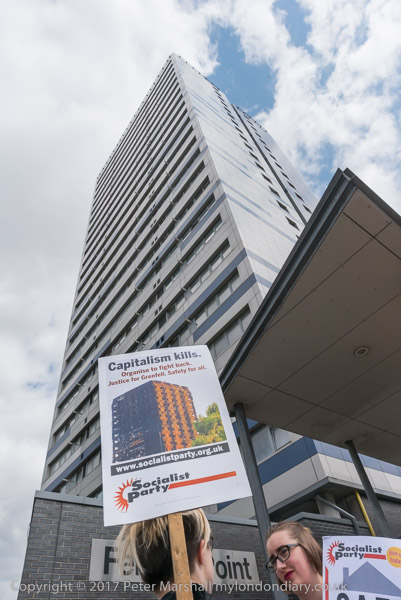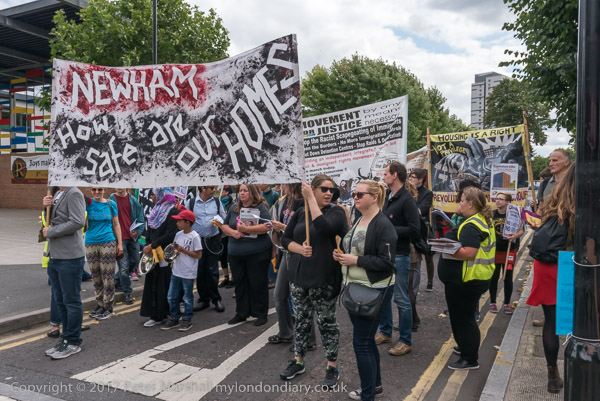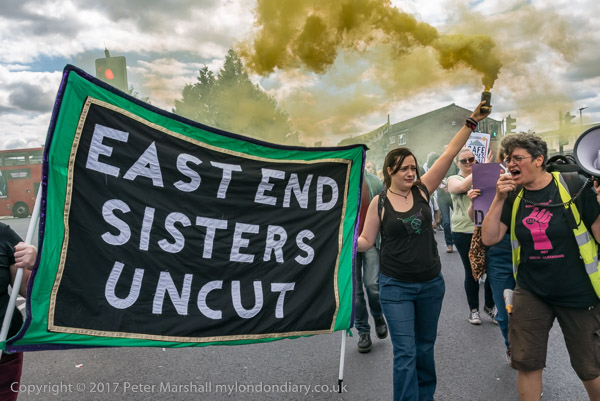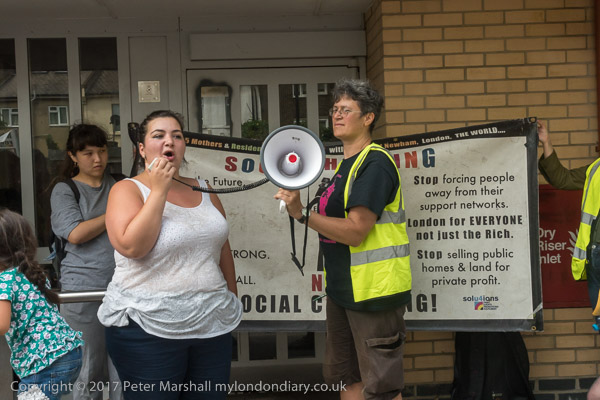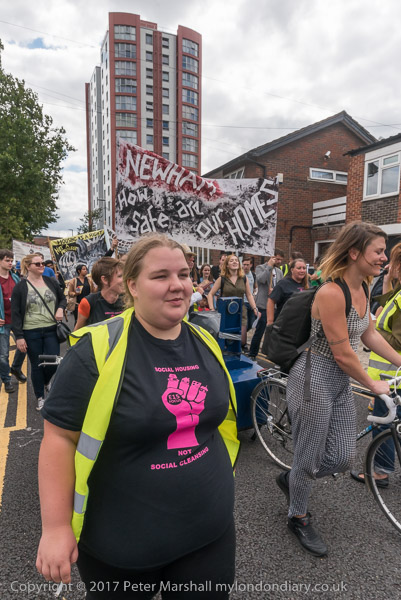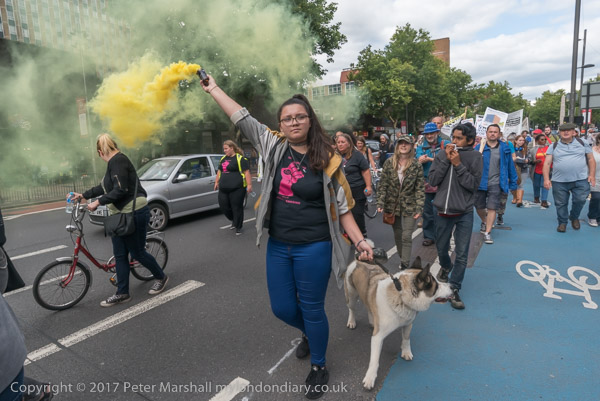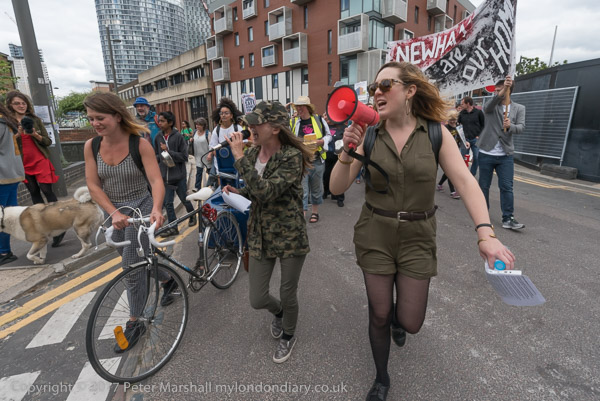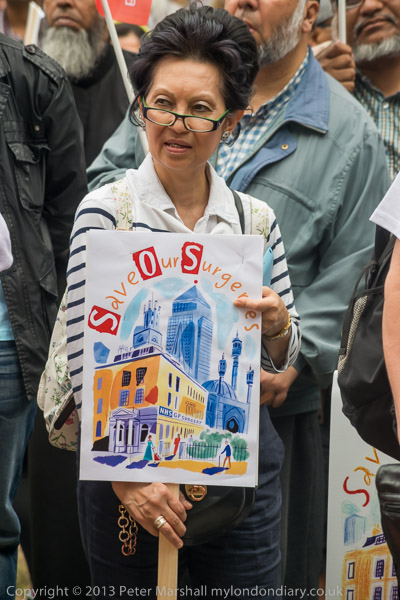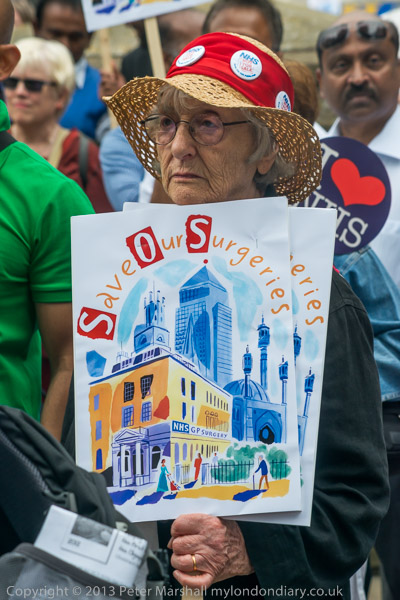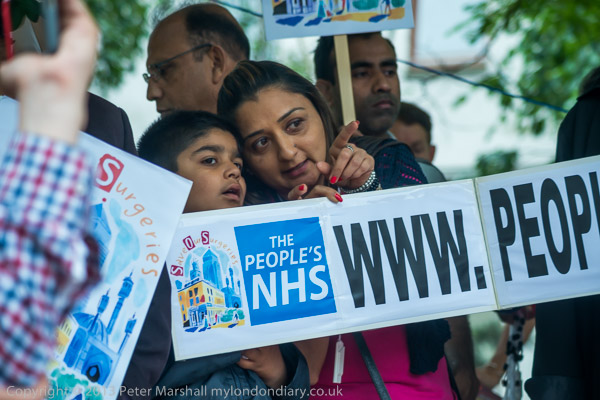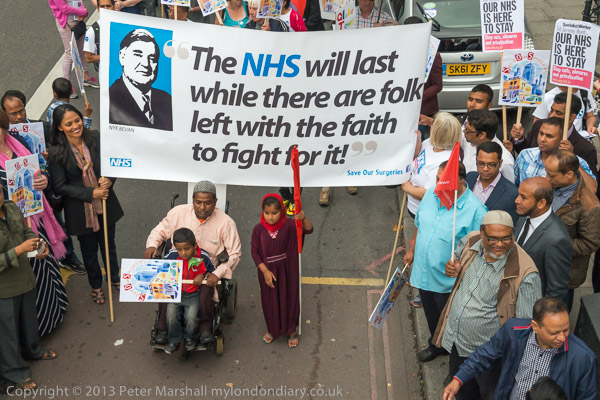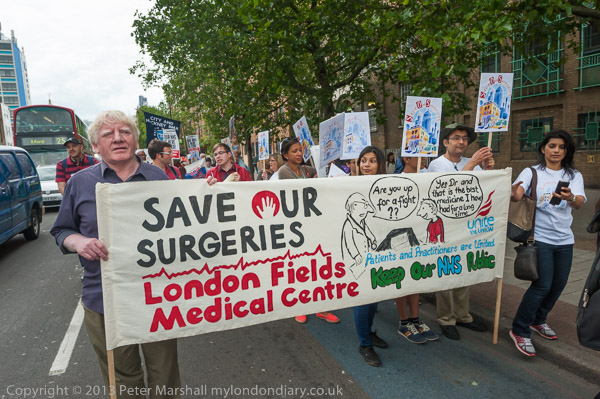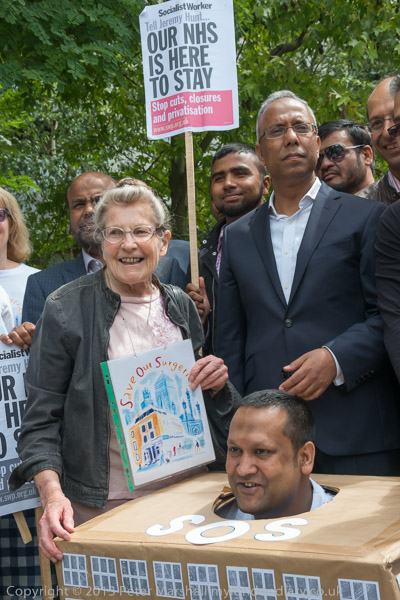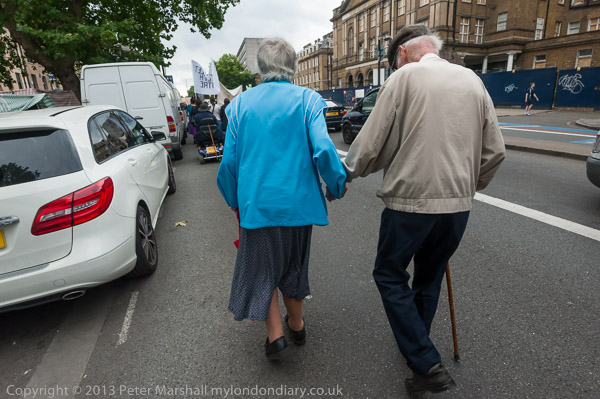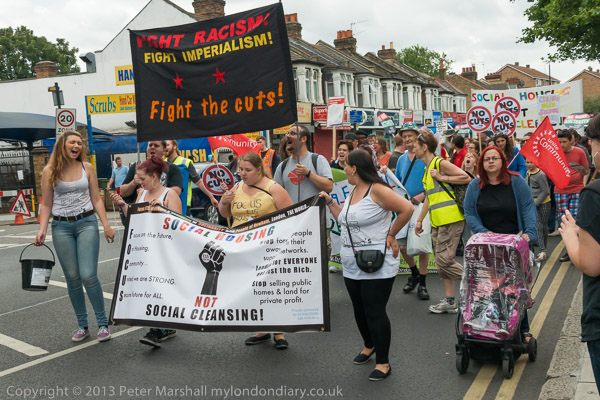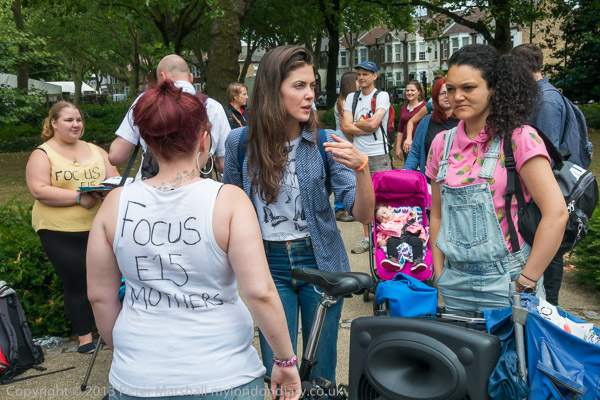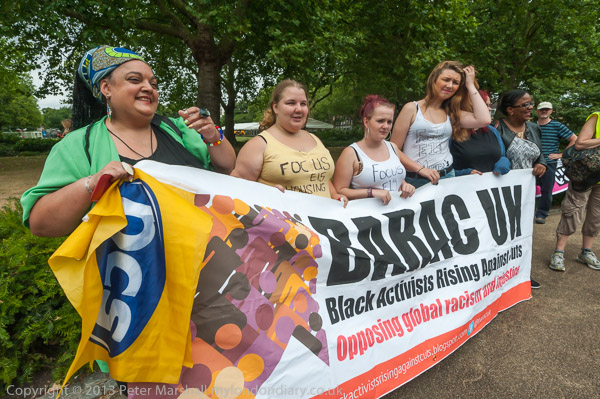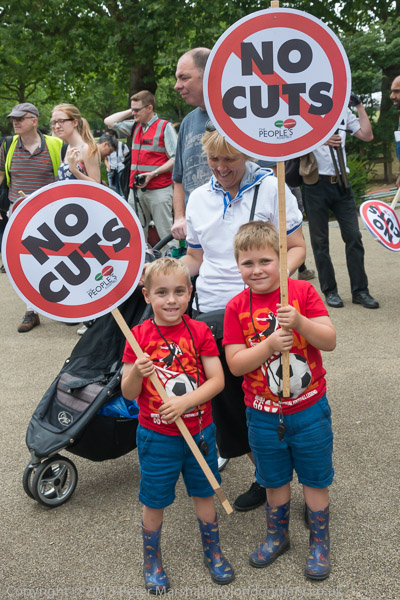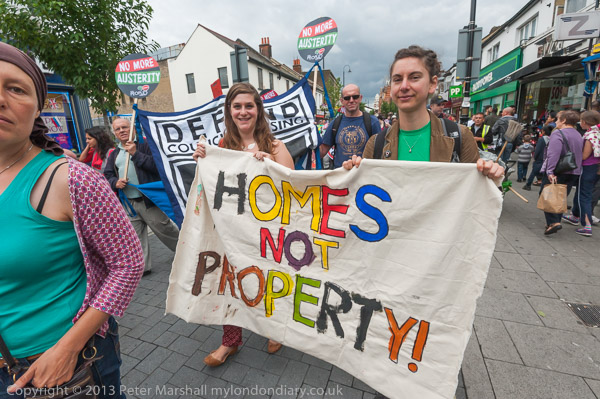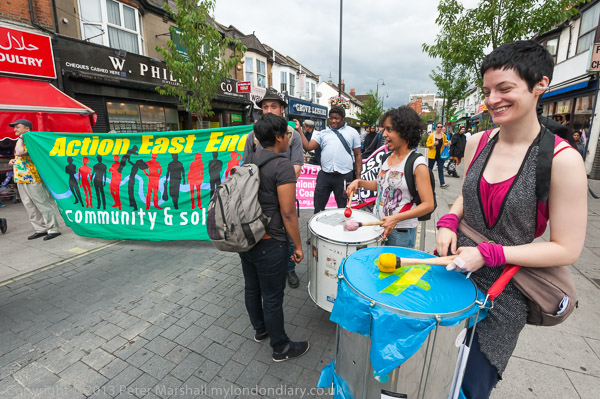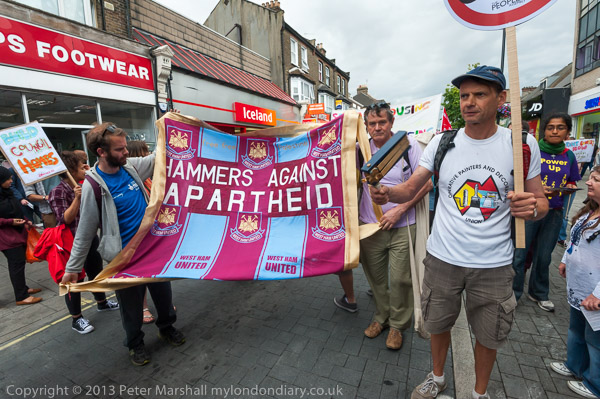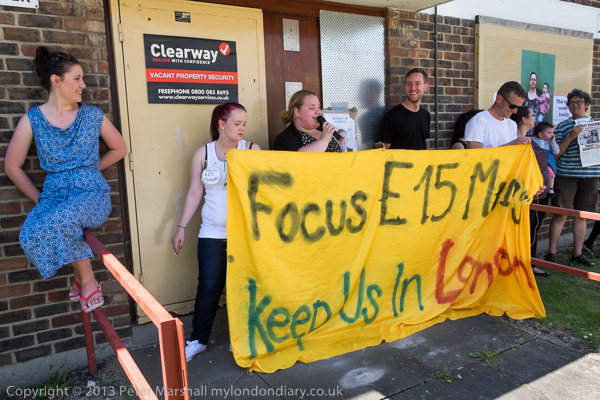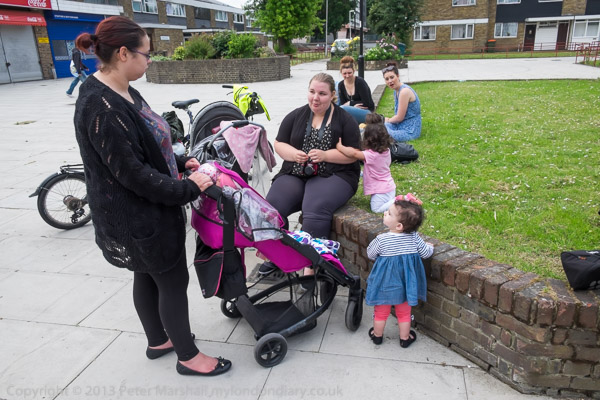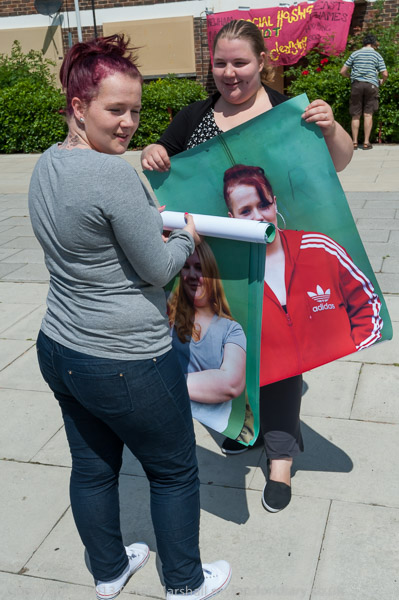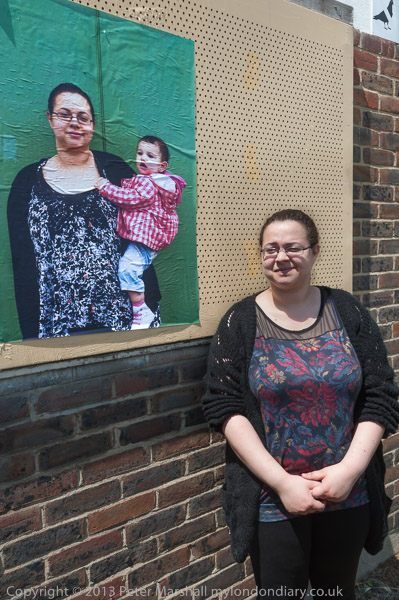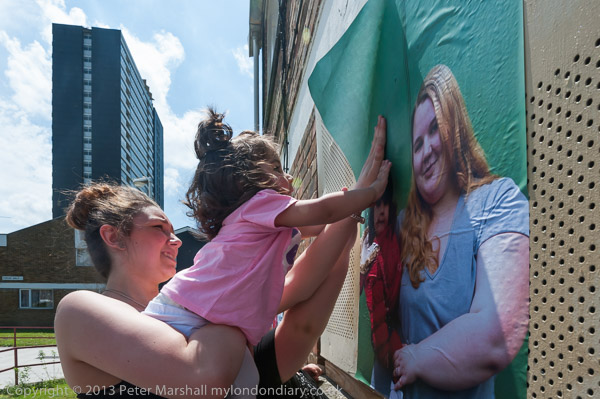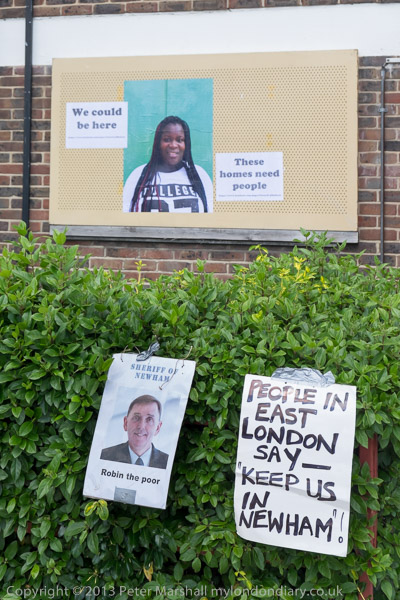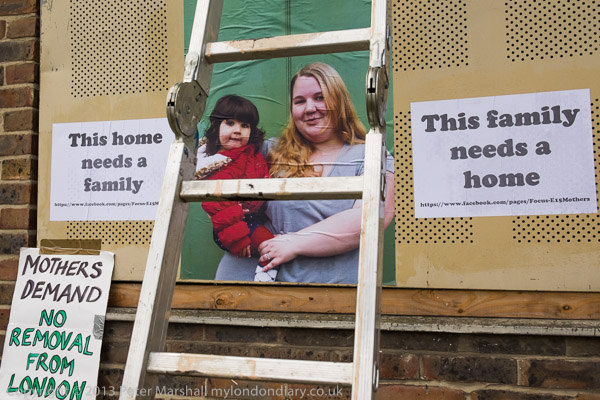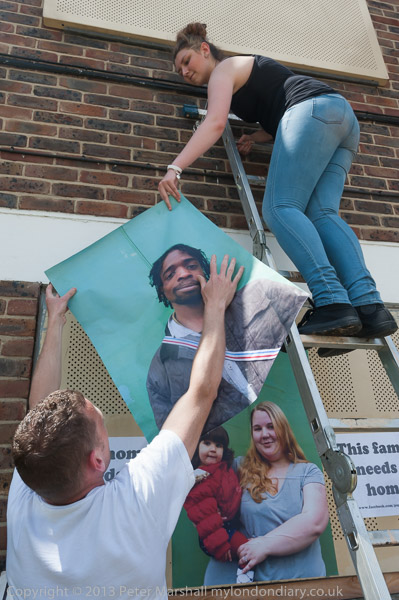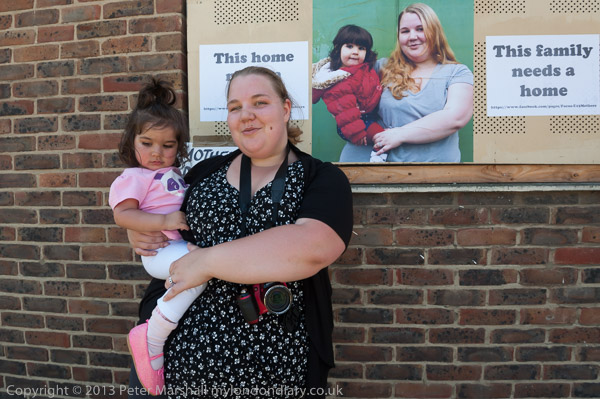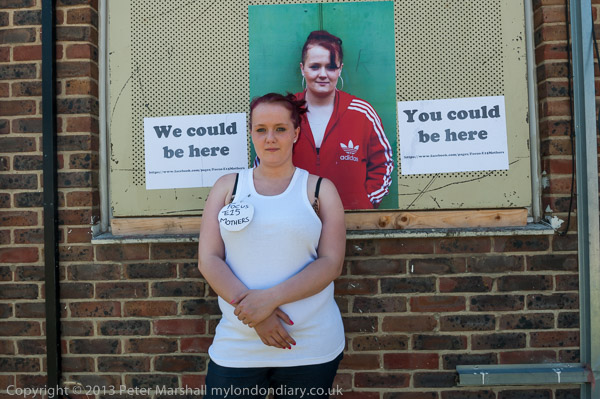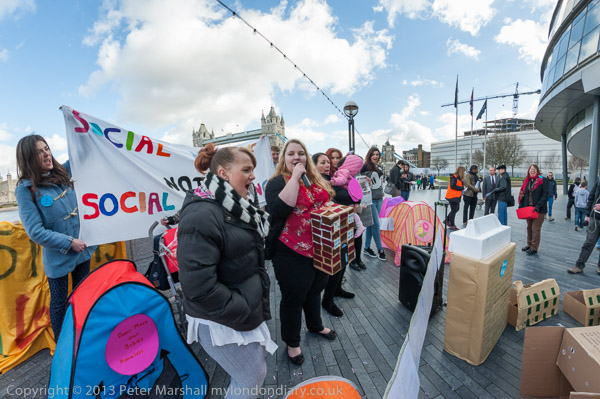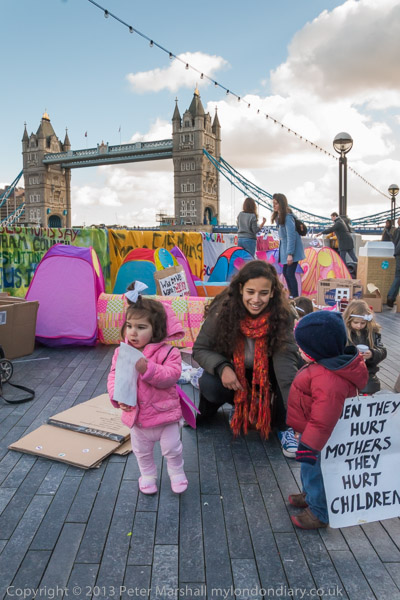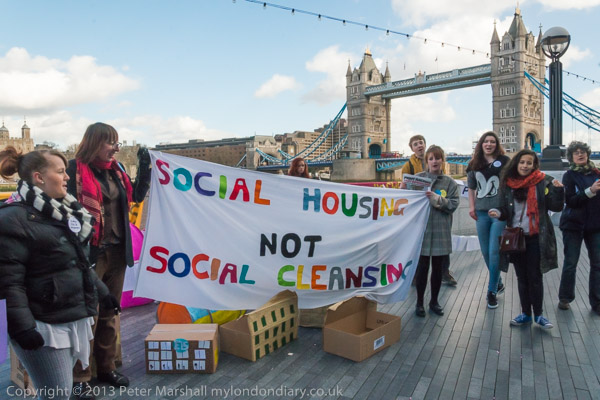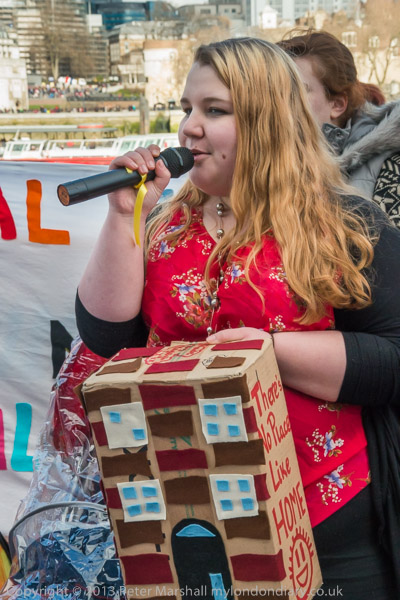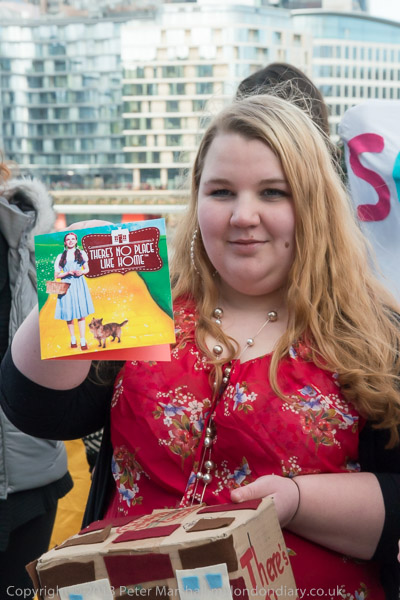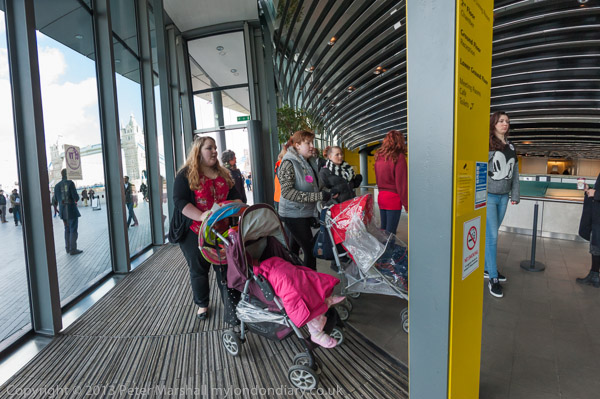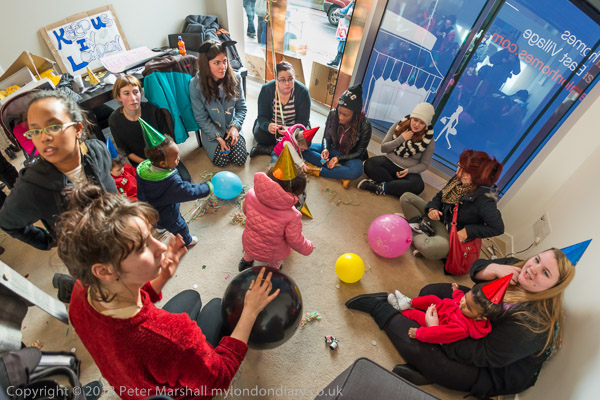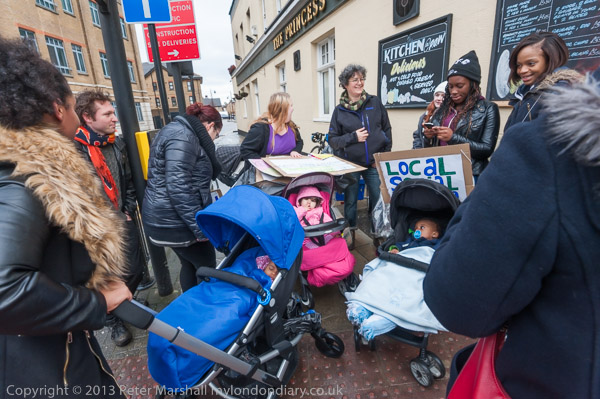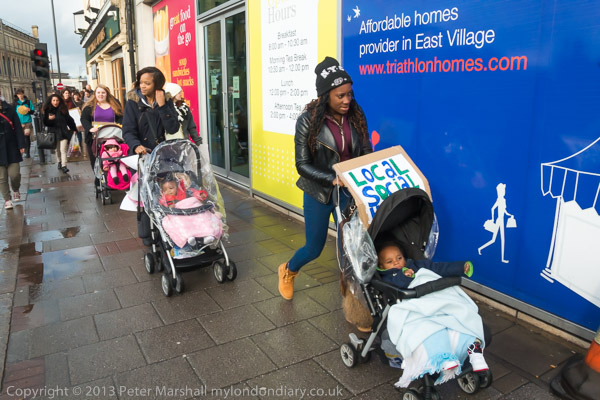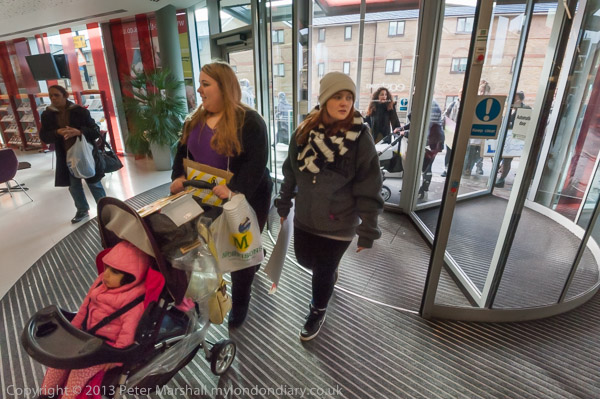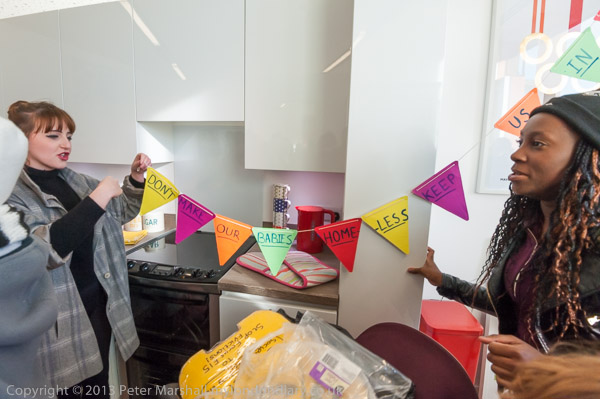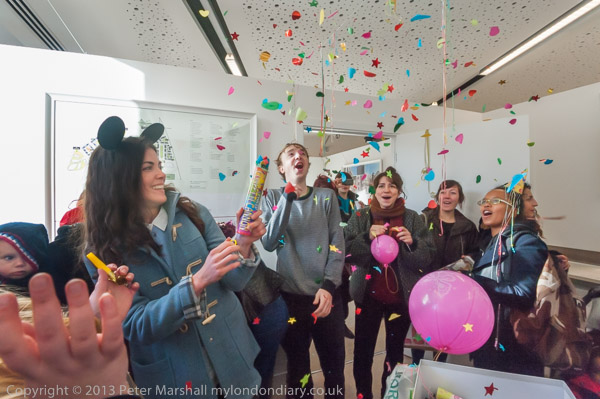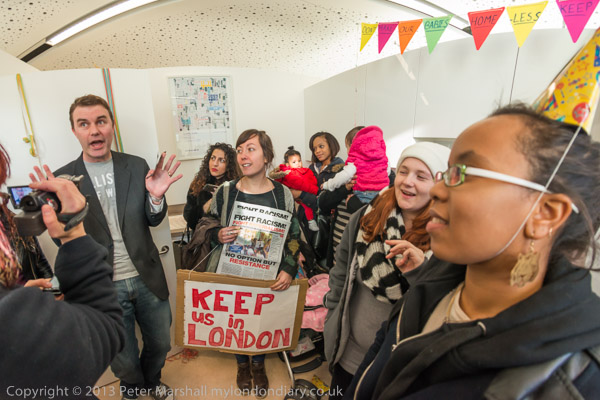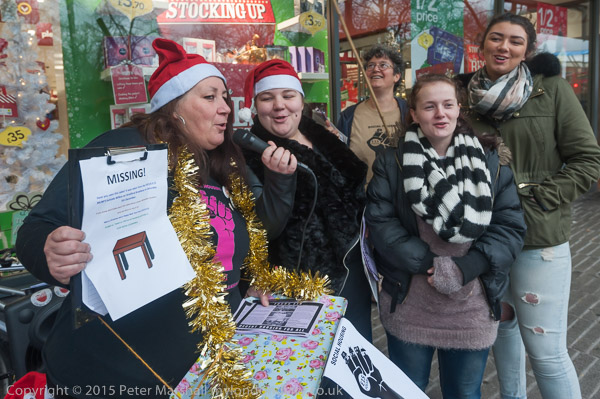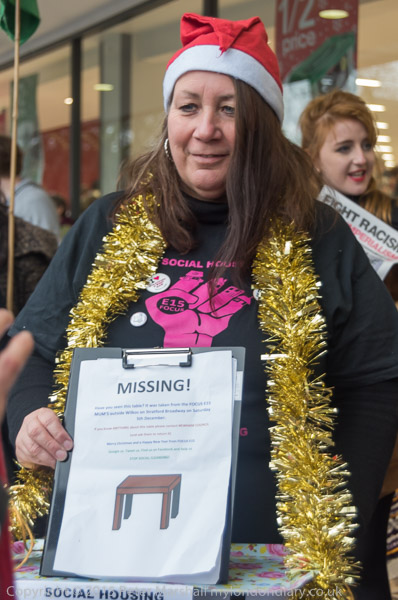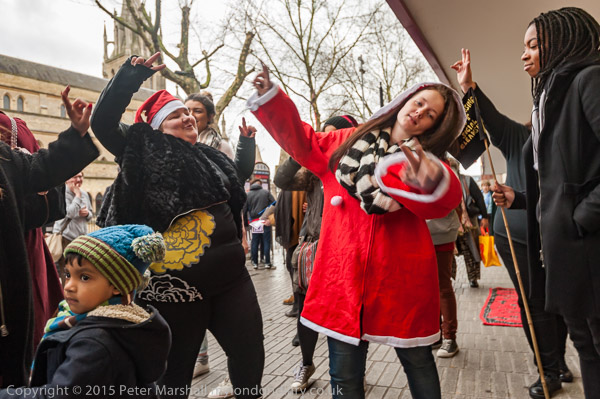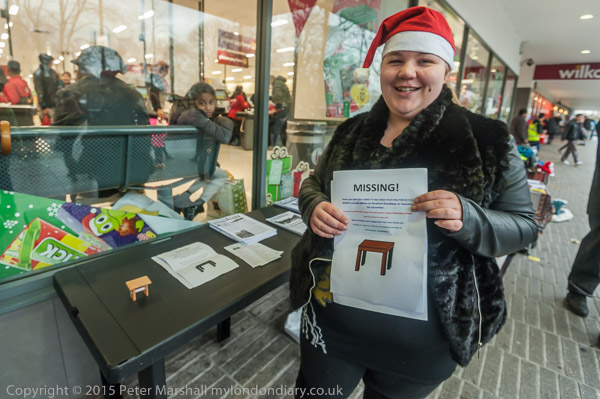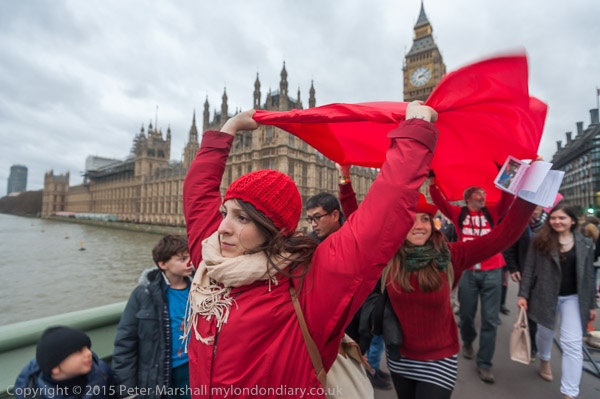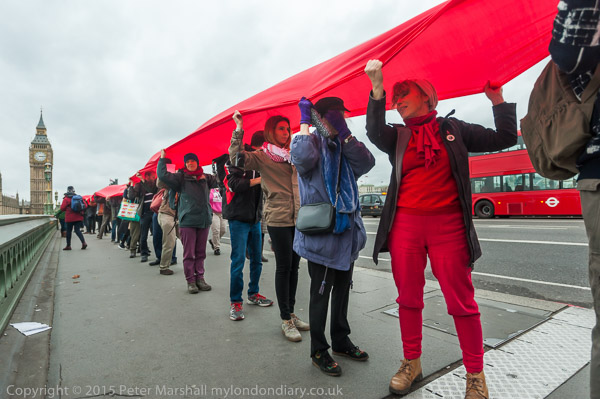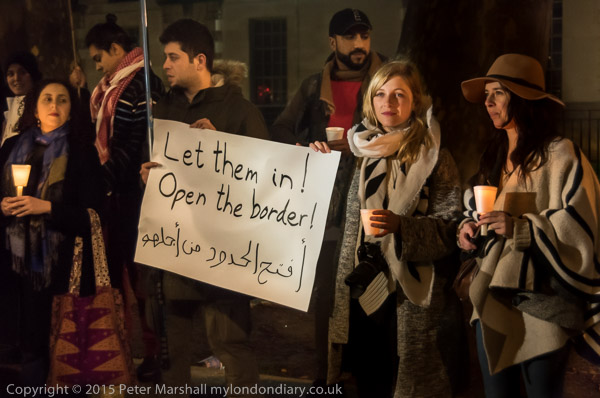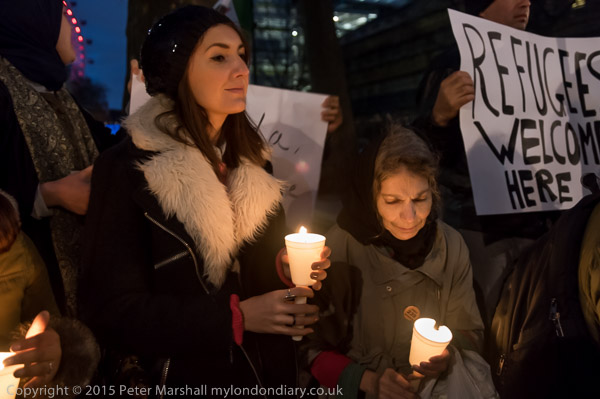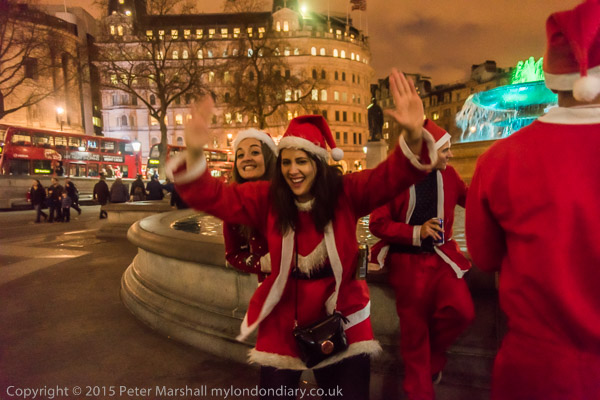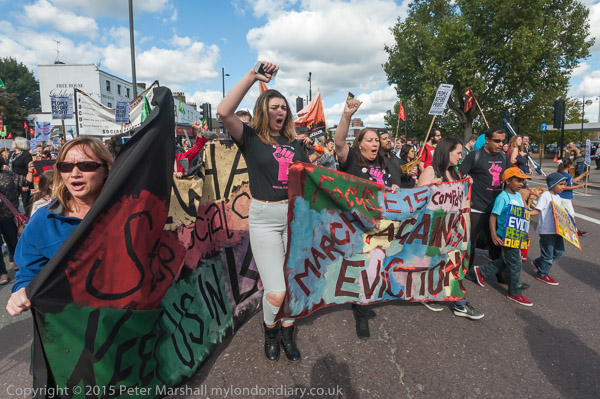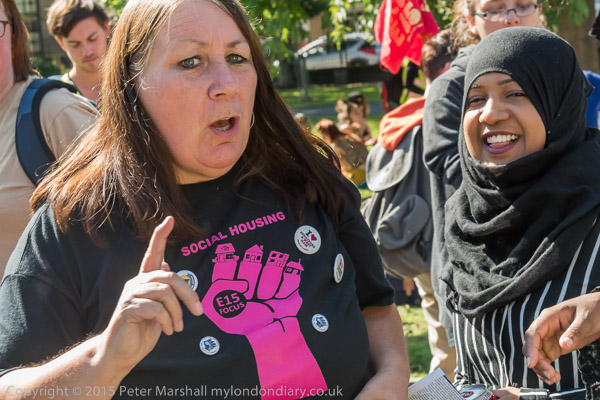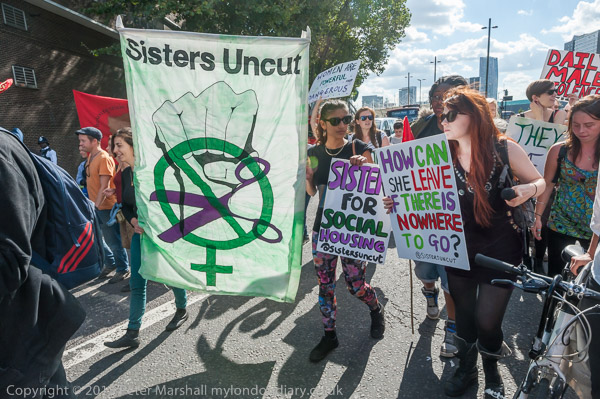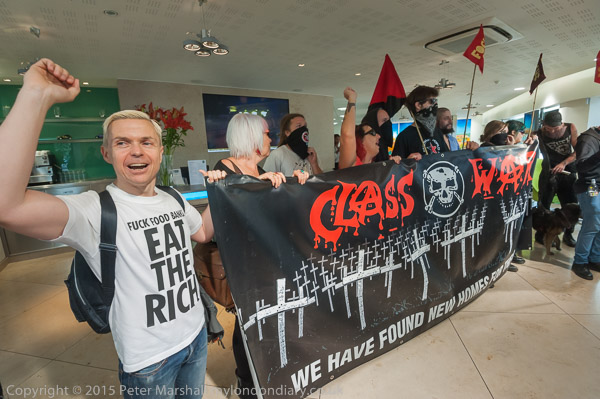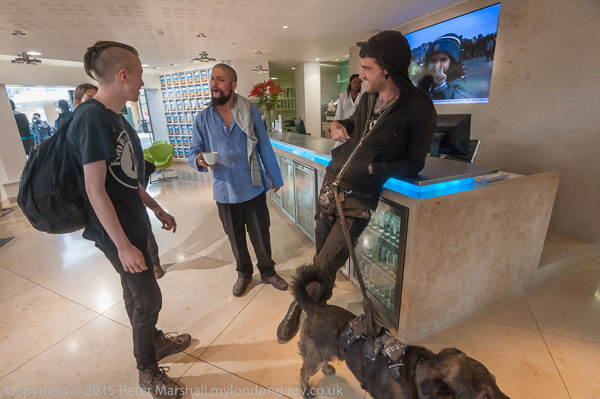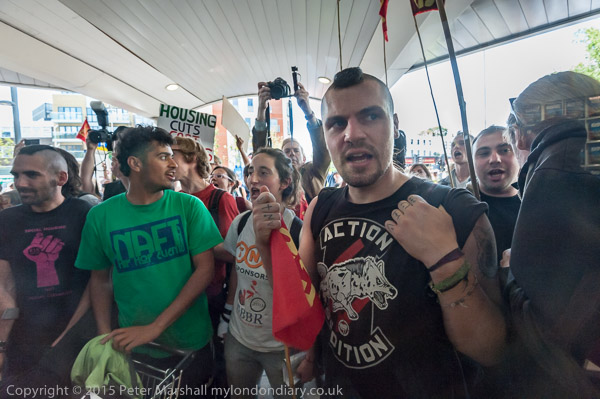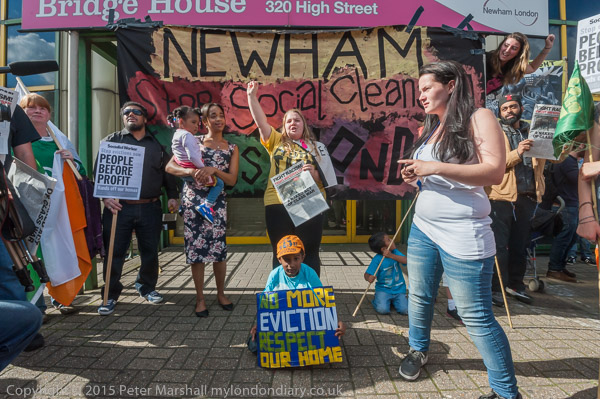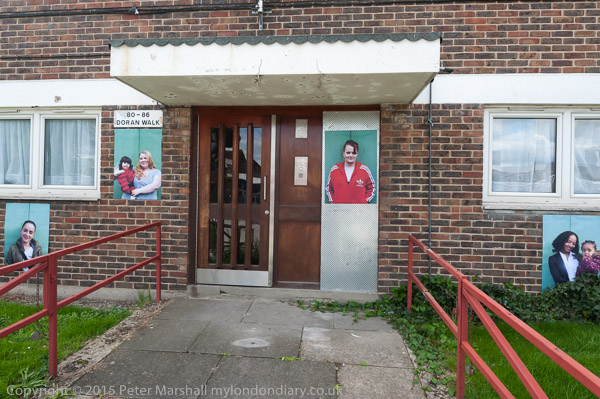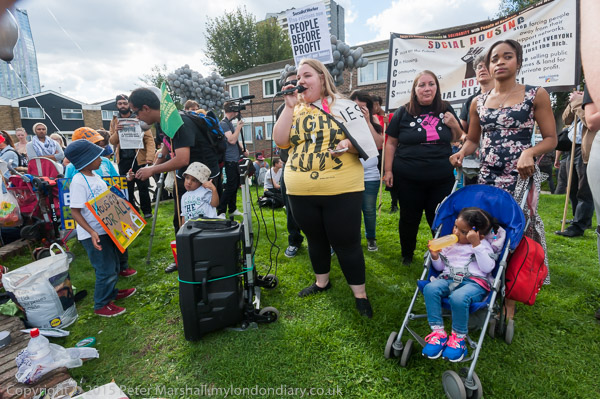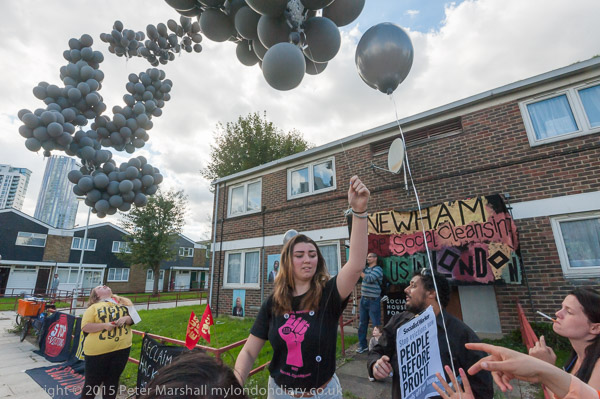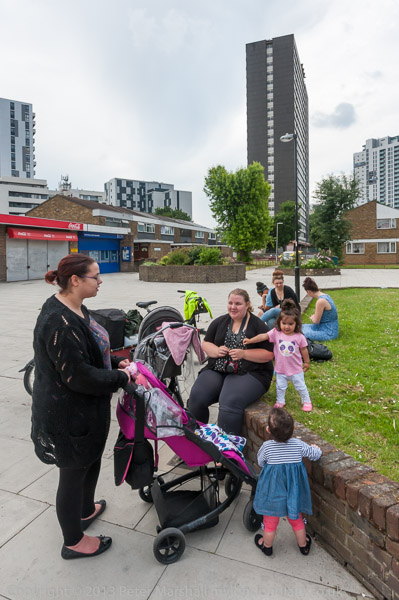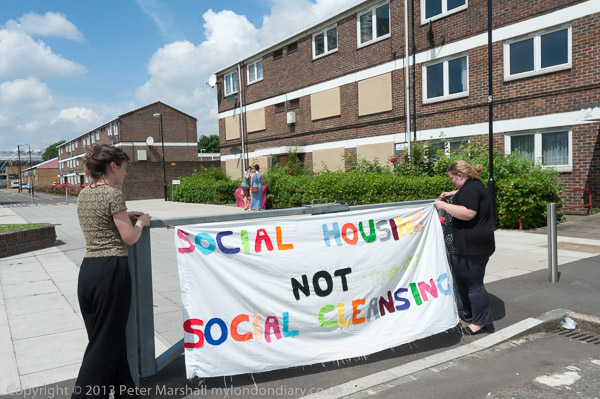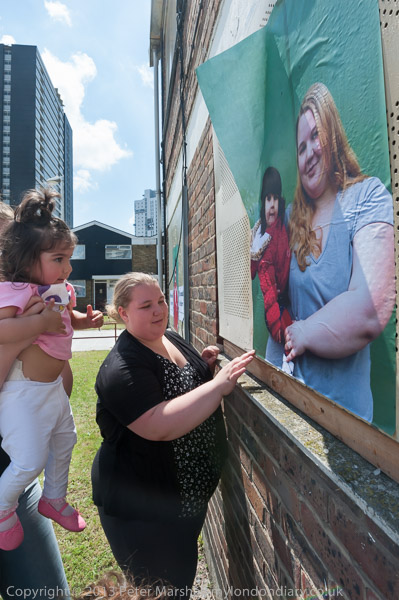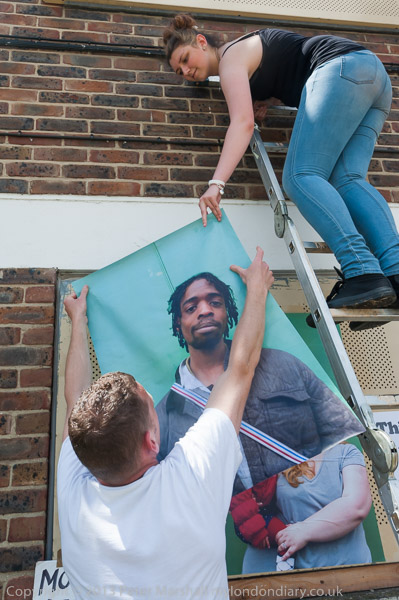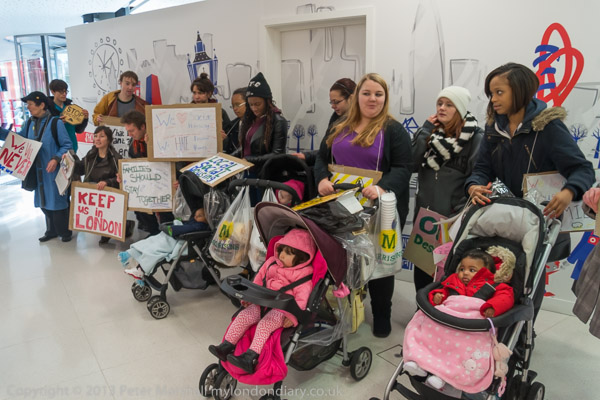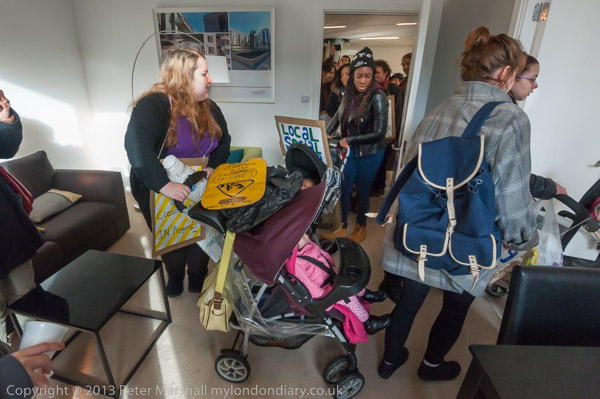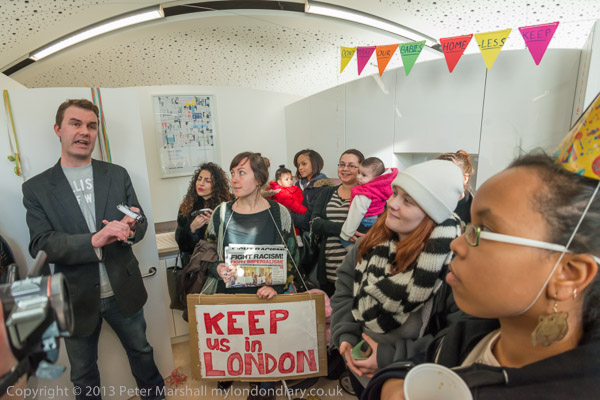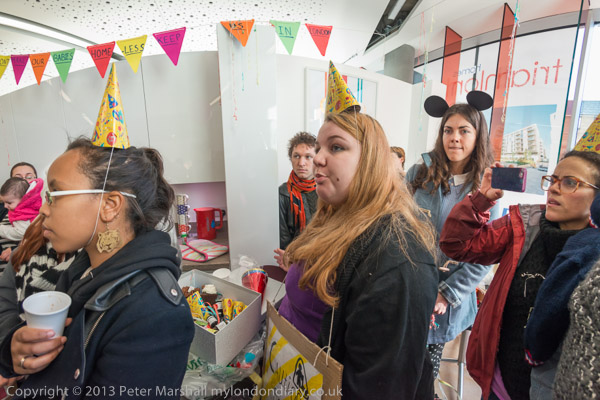Climate March & Open House: On Sunday 21st September 2014 I photographed the so-called ‘Peoples Climate March’ in central London before going to party with Focus E15 Mothers on the Carpenters Estate where they celebrated a year of their fight to be rehoused in the area.
Peoples Climate March – Embankment
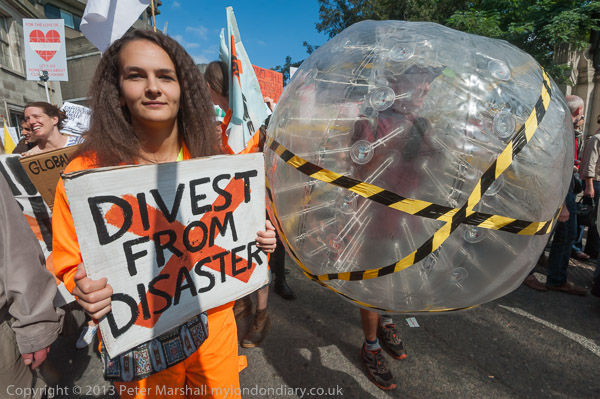
As in this week in 2023, a Climate Summit was taking place in New York in September 2014 and marches were taking place in London and elsewhere to demand divestment in fossil fuels and an end to the domination of politics by the fossil fuel industry which has blocked action against climate change.
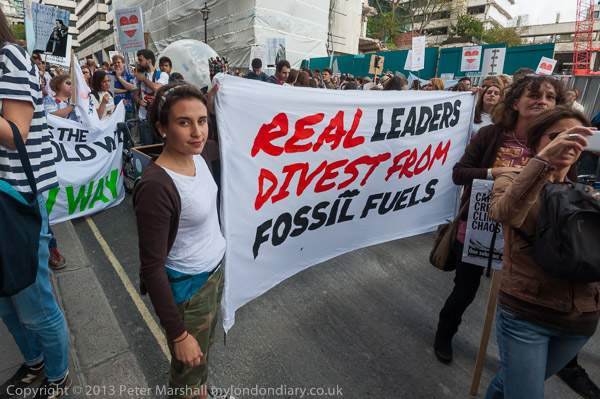
Little has actually changed in the 9 years since then. More empty words and promises but too many governments including our own in the UK continuing to encourage exploration for more gas and oil and even approving new coal mines. And carbon levels continue to rise, with at least a 2 degree rise in global temperature now seeming inevitable.

What has changed is that we are all much more aware that climate change is real and are feeling its effects. While many in the Global South have been suffering for years, we in Europe and North America have now felt the new record high temperatures and seen the increasing wild fires and unstable weather caused by global temperature rise.
Last Saturday I photographed another Climate March in London, and it had a rather more serious and committed air than the 2014 event, not just because it was organised by Extinction Rebellion, but because the global situation has worsened, with new an disturbing reports coming out almost weekly.
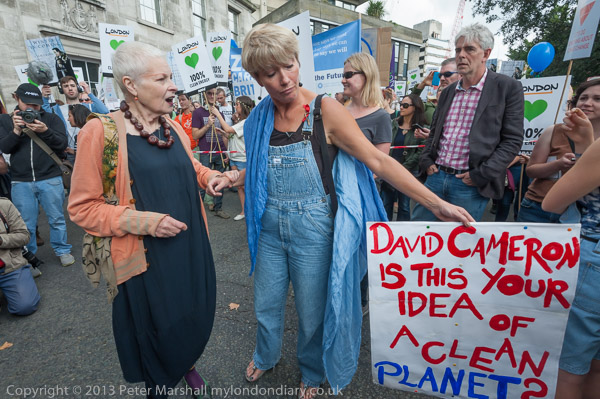
Back in 2014 I wrote about some length about the march and how it “seemed to have been rather taken over by various slick and rather corporate organisations rather than being a ‘people’s march’ and seemed to lack any real focus.”
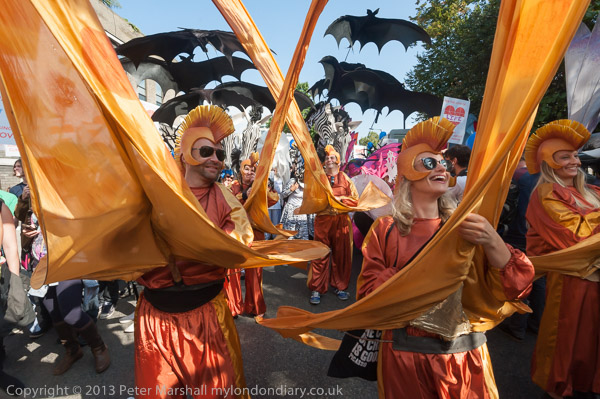
Then I commented that “There was one block – the ‘‘Fossil Free Block’ that I felt was worth supporting, and what the whole march should have been about. We have to stop burning oil, coal, gas. We are certainly on our way to disastrous climate change if we fail to severely cut carbon emissions, and probably need to actually reverse some of the rise that has already occurred. Drastic action really is needed.”
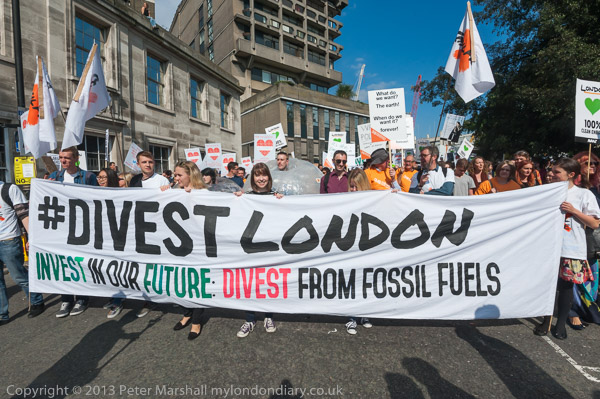
The 2023 march was behind a banner ‘NO NEW FOSSIL FUELS’ and another read ‘BIG OIL HAS FRIED US ALL’. But it didn’t get the kind of corporate support of the 2014 event and I don’t think there were any celebrities on the march, though I think some spoke at the rally afterwards, but I had left before this.
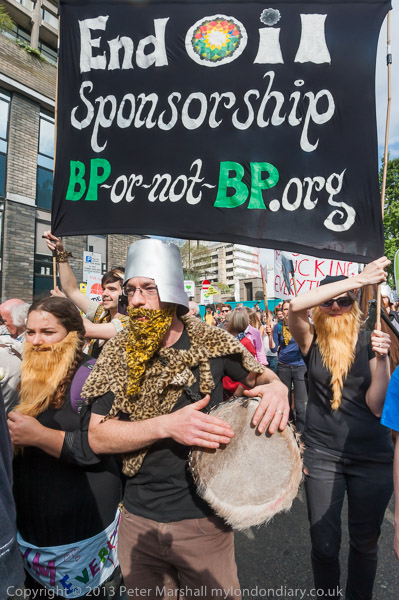
Worryingly in 2023 it was much smaller than the 2014 March. Back in 2014 I still felt there was time to avert catastrophe, but now I’m rather less optimistic. It may be too late. I have a feeling that in another nine years time we will be marching again, world leaders will still be talking and doing little and the world will be descending into chaos. Given my age it may still see me out but I worry about those younger.
More on My London Diary at Peoples Climate March.
Focus E15 Open House Day
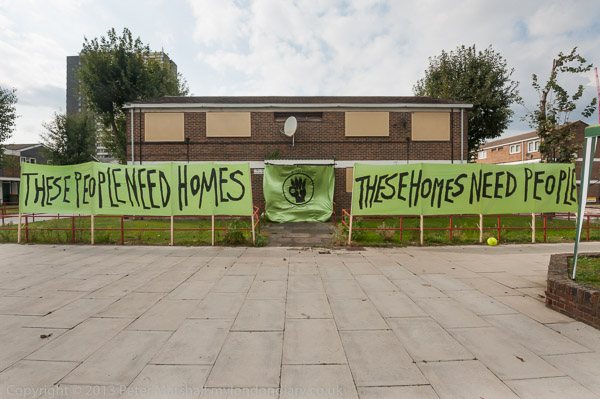
I left well before the end of the march in 2014 too, catching the Underground to Stratford to get to the Carpenters Estate in Stratford where Focus E15 Mothers were celebrating the first anniversary of their fight against LB Newham’s failure to provide local housing for local people.
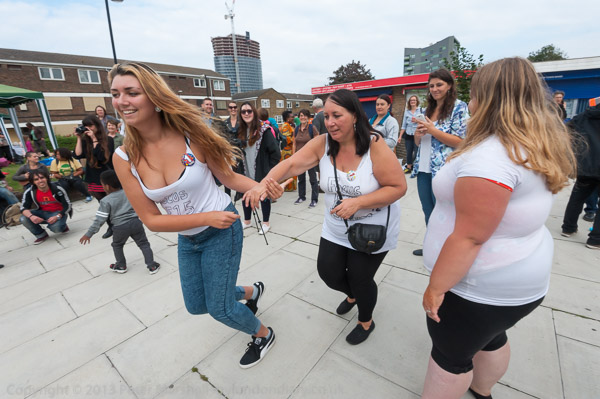
It was a year since Newham Council had cut funding for their hostel in Stratford run by East Thames Housing and they had been given eviction notices. Newham, which had a statutory duty to rehouse them told them it would be in private rental property miles away in Birmingham or Hastings or Wales but they wanted to stay within reach of families, jobs support services and friends in London.
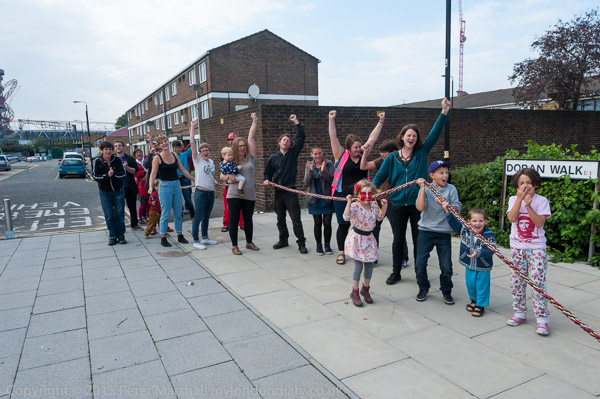
Unlike many others they decided to fight the council, and launched an active and successful campaign, later widening their personal fight into “a wider campaign for housing for all, for social housing in London and an end to the displacement of low income households from the capital, with the slogan ‘Social Housing not Social Cleansing’.”
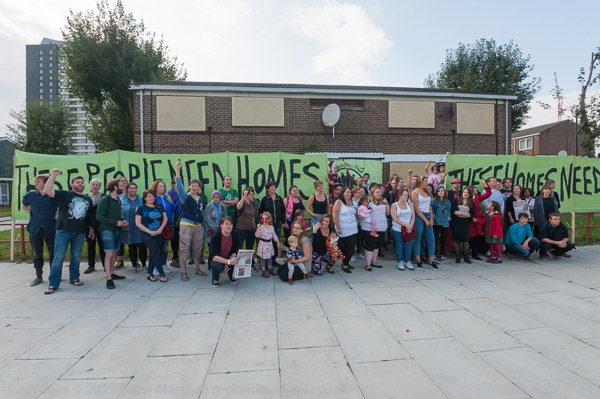
Despite the desperate shortage of social housing in Newham, the council led by Mayor Robin Wales had been trying to sell off its Carpenters Estate for ten years, moving people out and leaving good homes empty. The estate is next door to Stratford Station and Bus Station and so has excellent transport links making it very desirable for development. It is a post-war estate with large numbers of good quality low-rise housing along with three tower blocks. By 2014, most of the properties had “been boarded up for years, empty while thousands wait on the council’s housing list.“
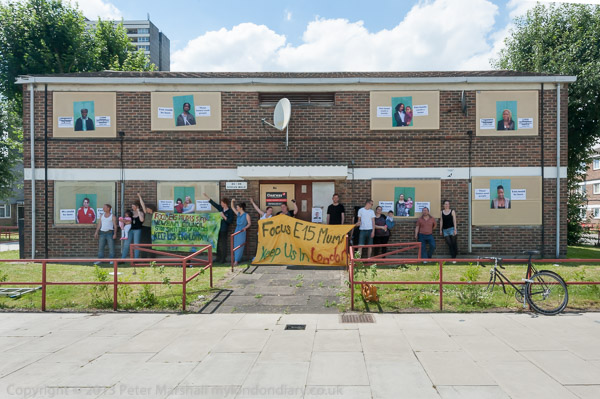
In June 2014 I’d come with Focus E15 to the estate and had photographed them pasting up large photographs of themselves on some boarded up flats with slogans such as ‘This home needs a family‘ and ‘This family needs a home‘ and ‘These homes need people‘. I’d been told something intersting might happen at the party and wasn’t surprised when after a noisy session by a samba band to mask the sounds of removing some of the metal shutters at the rear of the flats we saw some of the E15 mums and supporters waving at us from a first floor window.
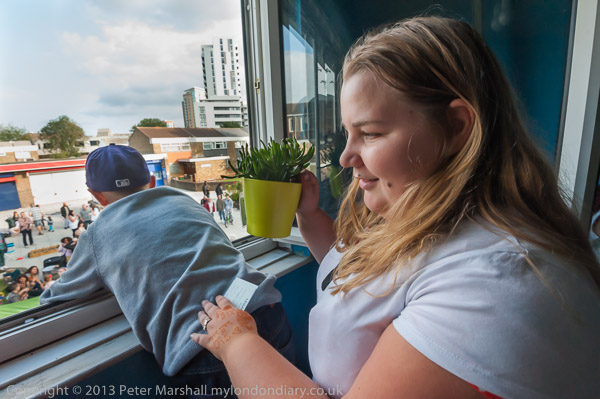
“It was Open House Day in London and courtesy of the Focus E15 Mums, 80-86 Dorian Walk was now one of the houses open to the public, even if not on the official lists, and we formed an orderly queue in best Open House tradition to go in and look at the four flats. “
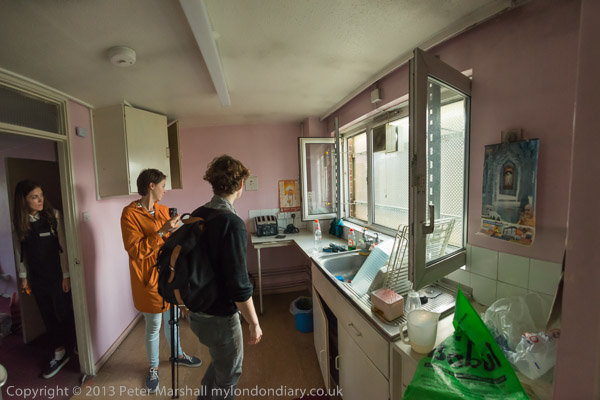
I was surprised to see what good conditions the flats were in, “fitted kitchens and bathrooms still in good working order – with running water, wallpaper and carpets almost pristine, and the odd piece of abandoned furniture. In one of kitchens, the calendar from 2004 was still on the wall, a reminder that while Londoners are desperate for housing, Newham council has kept this and other perfectly habitable properties empty for ten years.”
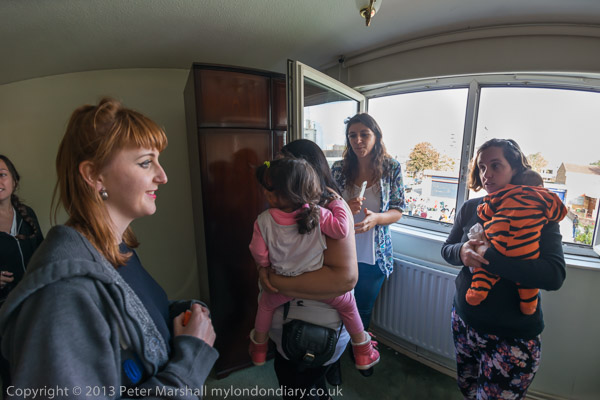
Focus E15 occupied the flats for a couple of weeks, leaving after the the Council issued legal eviction notices but their fight continued. Most of them have been rehoused in London and they have supported many others in Newham and neighbouring boroughs to get proper treatment from the council and prevent evictions. Their actions saved the Carpenters Estate and it is now being regenerated, although the plans don’t satisfy many of the groups demands. Their campaigns for housing for people in Newham continue.
More on My London Diary at Focus E15 Open House Day.
